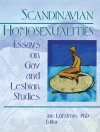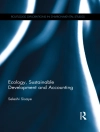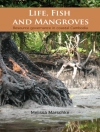Invasive species are responsible for significant impacts on agriculture, food security and health worldwide. This collection looks at a wide range of invasive species, including insects, plants, snails, fungal diseases, including: Mimosa diplotricha, Chromolaena odorata, privet, Opuntia, fall armyworm, Aedes albopictus, Prostephanus truncatus, Pomacea, and ash dieback. The articles examine mechanisms for detecting the spread of invasive species, and models for understanding the mechanisms of invasion alongside control and management approaches with a particular focus on biological control. The articles have been specially selected from contributions to CABI Reviews.
About the author
Melina Kourantidou is an environmental and resource economist specializing in invasive species management, fisheries economics, and management. Her research leverages interdisciplinary approaches that combine economics, ecology, and biology to address environmental issues, enhance management strategies, and promote sustainable development and ecosystem resilience. Grounded in aquatic resource management and governance, her work integrates both natural and social sciences to examine the impacts of ecological and socioeconomic changes on aquatic environments. She engages with local resource users and communities to understand trade-offs, often employing bioeconomic modeling to optimize resource allocation and develop strategies for controlling and monitoring invasive species.












